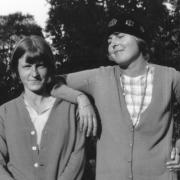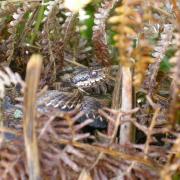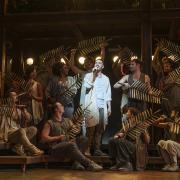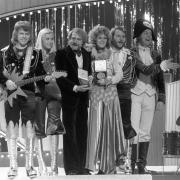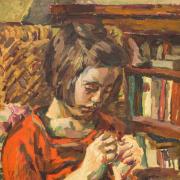New film Saving Mr Banks tells of the long struggle Walt Disney had in persuading author P.L. Travers to allow her Mary Poppins, concocted in a cottage in East Sussex, to be made into a screen musical

“Mary Poppins. Practically perfect in every way.” Generations of children would heartily endorse the self-congratulatory sentiments of P.L. Travers’ no-nonsense heroine, finding her mixture of stern discipline and magical ability utterly irresistible. Somewhat sanitised by the perennially popular Disney musical of 1964, Travers’ original character was a considerably more ambivalent woman than the cheery, upbeat figure inhabited on screen by Julie Andrews, her roots lying deep in Travers’ volatile childhood.
Born Helen Lyndon Goff in 1899 in Queensland, Travers adopted her beloved father’s first name as her professional identity, adding the ‘P’ for Pamela at a whim. She would subsequently embroider richly exotic tales of her early life in Australia, but actually – as the film Saving Mr Banks poignantly shows – her father was a romantic, drunken bank clerk who died young and disillusioned, but who nonetheless inspired in his daughter a fertile imagination. As a child, Travers inhabited a rich fantasy universe, having a natural affinity with animals, and as a young woman she acted for a while before gravitating into journalism. She subsequently decided that, as London represented to her the unrivalled centre of the literary world, it offered the best opportunities for progression, and so in 1924 she courageously embarked on a new life abroad.
Usually possessed of phenomenal energy, by the late 1920s Travers had overstretched herself, suffering debilitating attacks of pleurisy whilst living in constant fear of developing tuberculosis, a concern that happily proved unfounded. By this time she was living with a friend called Madge in London, but on her doctor’s advice decided to relocate herself outside the capital, her preference being for the village of Mayfield, where a picture-postcard dwelling named Pound Cottage fulfilled every bucolic dream.
This quaint place had once been the stockman’s cottage at the nearby Forge Farm and dated back to at least 1632, the date carved on an oak beam over the fireplace. The cottage walls were so old that they were made of wattle and daub. Birds nested in the thatched roof and archaeologists often asked if they could buy the place, so picturesque was its appeal. When the two women first moved to the area in 1930, it was nestled in a rural idyll, surrounded by seemingly endless vistas of fields.
As Valerie Lawson, Travers’ biographer, perceptively noted, it was the sort of spot to conjure the most vivid childhood delights, such as the memorable characters created by A.A. Milne. “One could imagine Piglet and Pooh cavorting on their way to Eeyore’s gloomy home...this was a perfect place for a writer, isolated and serene, except for the nightingales which, Travers complained, sang all night.”
Pound Cottage was around a 15 minute drive from Mayfield, and whilst there Travers and her friend would enjoy day trips into nearby Hastings and playfully pose for laconic snapshots in the cottage’s garden. The importance of maintaining security in their secluded position led to the acquisition of a white bulldog called Cu. Travers added a studio to the cottage where she kept the scrapbooks of stories, one of these being the tale of a certain Mary Poppins and the Match Man.
Originating from the late Twenties, this embryonic Poppins tale revolves around the Banks household, where Mary Poppins is a nurse rather than the other-worldly apparition she became, but wearing the white gloves and carrying the parrot-headed umbrella familiar from her later incarnation. She meets Bert, the match man and pavement artist, and they disappear into one of his paintings, where they climb aboard a merry-go-round, a sequence surviving into the first book and the 1964 film. Travers felt this was one of her weaker scenes, convinced that her real destiny lay as a poet rather than as the children’s writer for which she would become renowned.
Ensconced in the cosy confines of Pound Cottage, ill health forcing the leisure in which she could finally develop ideas she’d been mulling over for a while, Travers began to write in earnest. Her friend, the poet and Irish nationalist George William Russell, had suggested she write a story about a witch, and merging this idea with the tentative sketch of Poppins already forming in her mind, she began to compose what became the Mary Poppins we know today, setting it within the Depression-era of the 1930s.
Saving Mr Banks suggests Poppins was inspired by Travers’ brisk Aunt Ellie, who helped the family at their time of greatest need, with her “spit spot” common sense proving to be an invaluable asset. But whilst Ellie certainly seems to have been one of the book’s influences, the writer would never fully clarify her sources, an evasiveness familiar to her fictional heroine. “Nobody ever knew what Mary Poppins felt about it, for Mary Poppins never told anybody anything.” At the time of the first book’s publication, The New York Times recorded Travers as saying “the ideas I had [as a child] move about in me now,” and that “sorrow lies like a heartbeat behind everything I have written.”
The inimitable Mary Poppins arrives at number 17 Cherry Tree Lane, blown in by the east wind, sliding up the banisters and armed with an enormous carpet bag, out of which the most preposterous items emerge, to the natural delight of young Jane and Michael Banks who have been dreading the arrival of a new nanny. Never specifically intended just for children and memorably blending fantasy with the everyday world of the nursery, with its Sunlight Soap and daily anxieties, Travers incorporated aspects of her own life, large and small, into the book. Poppins’ umbrella was reminiscent of one owned by a childhood nurse; the father, Mr Banks works as a bank manager (just as her own father did); and the family has money worries, just as she remembered all too well from her own childhood. In a moment of rare confidentiality she once confided in print that, in essence, “if you are looking for autobiographical facts...Mary Poppins is the story of my life.”
Poppins beguiles as a character precisely because she offers such a mixture of charm and mystery and yet remains ever so faintly sinister, a forbidding yet loveable character who imposes order amidst chaos, and who holds the children in thrall in a blend of terror and rapturous admiration.
“You could not look at Mary Poppins and disobey her. There was something strange and extraordinary about her – something that was frightening and at the same time most exciting.”
The book was an immediate success on its publication in 1934, swiftly followed by several sequels which consolidated Travers’ reputation. She would remain based at Pound Cottage until the outbreak of the Second World War, when she and her adopted infant son Camillus left for the safer shores of Canada and the United States. Mayfield had by then become a busy base for troops, and by 1944 a target for German doodlebugs. Travers sold the house in the late Forties, moving to London, which became her principal base for the rest of her long life.
“We are all looking for magic...We all need to feel we are under a spell and one day a wand will be waved..” she once wrote, and although life often disappointed Travers’ expectations, by creating a figure as indelible as Mary Poppins she certainly contributed her own slice of literary magic to the world.




